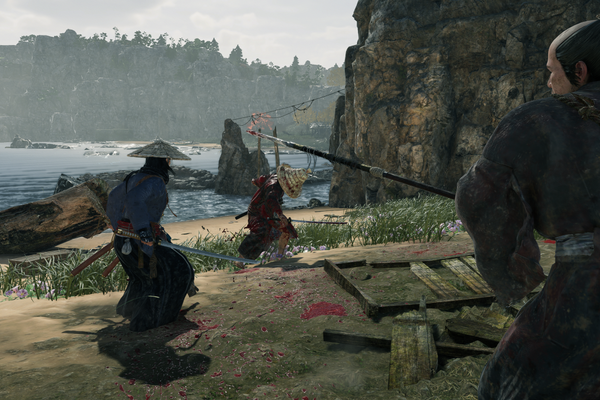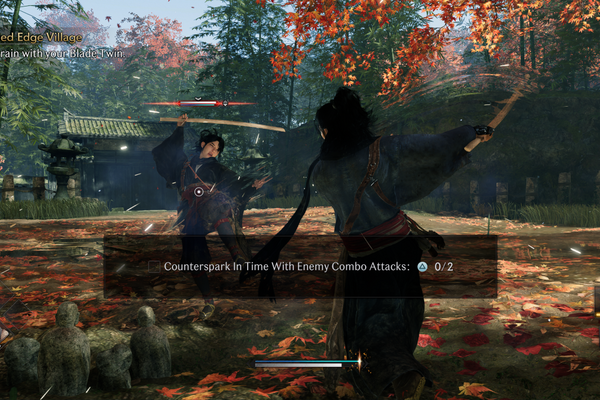Elden Ring already showed us what an open-world Soulslike could look like. Rise of the Ronin takes a different approach to the same idea, swapping out an arcane, unknowable world for historical Japan and trading obscure secrets and mechanics for Ubisoft-style open-world activities. The result is a flawed game propped up by an intriguing setting and excellent, bloody combat that mixes guns with blades.
Rise of the Ronin takes place in 1858, the year the Harris Treaty was signed, opening Japan’s borders to free trade with the US. Japan feared America’s army, so the shogunate accepted unfavorable terms with the Western barbarians to avoid conflict. For the US, Japan was simply another stepping stone on its way to trade with China, a country that just taught Japan what it means to oppose colonial powers in war.
You’re dropped in the middle of this as a ronin, traveling the lands and accepting the jobs you want, whether they be pro- or anti-shogunate. But eventually, you’ll be forced to pick a side – are you a government tool or a xenophobe?
As you play, however – at least, this was true for me – you begin to become radicalized for the cause. You see how the citizens are treated by their government and the American culture vampires. You see the aftermath of the cholera epidemic, brought to Japan from overseas. Before you know it, you’re a card-carrying member of the Japanese Brexit Party.
These themes are reflected in the world, the people, your tools – every facet of the game. You visit cities full of locals and you’ll see American soldiers hanging out on the streets. You’ll walk past a row of Japanese Minka flanked by the beautiful pagoda, only to turn a corner and see a Western embassy. You have two swords on your hip, but you can also carry a revolver on your waist or a rifle slung over your shoulder. Cholera isn’t the only epidemic.

You can look at the game through the same lens. Here you have a Soulslike with hardcore combat in a traditional open-world game with repeating side content. Collect all the cats, hunt the bounties, and find all the points of interest for an experience boost. But these activities sit alongside Japanese game design, such as how you can gift NPC party members different items to make them like you more, Onimusha 2-style, or how you can send the cats you find on little missions to spend time with lonely people. Some of those bounty targets? They’re wild hogs, for some reason. You unlock new equipment by finding foreign books, almost as if they’re magical tomes. Its influences are a true cultural mix.
I almost forgot I wasn’t playing Red Dead Redemption as I rode through a bustling town on horseback, wearing a cowboy hat and a waistcoat, and a random encounter drew my attention down a nearby alleyway. The characters are rigid and the performances are stilted, but the vibe of the world is immaculate, and that does a lot to carry the experience. Of course, this is Team Ninja so the combat drags it the rest of the way.

Combat is fast and bloody. The equipment screen has been infected with the gear score number virus, but you don’t see numbers popping out of enemies as you slash off their limbs. You can carry two melee weapons at a time, as well as two ranged weapons, switching between them with a hold and tap of two buttons. But there’s genius in this decision. The button you hold, when timed just after a strike connects, also flicks the blood from your blade, which replenishes a little stamina. This means you can essentially chain weapon swap combos if you play skillfully.
It mixes this with an almost Sekiro-like parry, where you’re asked to parry every strike in an enemy’s combo to chip away at their max stamina and open them up to a killing blow. But Sekiro’s parry window can be considered tame compared to this. Where FromSoftware’s ninja game allowed you to get away with tapping block inaccurately, so long as you were tapping, here you’ve got to be bang on the beat, which isn’t helped by enemies who feint swings. I’m not saying it’s harder than Sekiro because there are a lot of ways to get around skilled fighting – guns, stealth, flamethrowers – but that specific aspect is less forgiving. And if you happen to gas out during all of this, you’re left open to a big attack from the enemy. It also has another parry if you’re carrying a revolver, which works the same way guns do in Bloodborne – fire it as they wind up their attack and it’ll do a chunk of stagger damage and leave them wide open for your sword.

Another thing I appreciate about the combat is how you get better with the skills and weapons you use, leveling up your mastery with every swing. The more heads you lop off with katanas, the better your character will get with that specific style of fighting. There are polearms, ōdachi, and tanto, but you can also leave your second slot empty and master unarmed fighting. Some missions ask you not to kill, so you need to use this to get the best outcome, and I’m sure some players will try to do an unarmed run of the entire game. On top of all this, each weapon style comes with a variety of stances, which you can also switch between (yes, also in the middle of a blood flick), and each works best against different enemies and comes with a range of special techniques. Team Ninja is known for making deep combat systems, but this is a chasm.
Rise of the Ronin doesn’t have the production values of something like Ghost of Tsushima, but it’s mechanically and thematically superior. If you can handle the choppy frame rate, flat visuals, and stilted performances, you’ll find an open-world game with a lot of heart, a true identity, and plenty of nuances to master.
Score: 7/10
Version tested: PS5
More must-reads:
- Winners and losers from Day 2 of the 2024 NFL Draft
- Juwan Howard returning to NBA as Eastern Conference assistant
- The '100 catches in an NFL season' quiz
Breaking News
Customize Your Newsletter
 +
+
Get the latest news and rumors, customized to your favorite sports and teams. Emailed daily. Always free!

